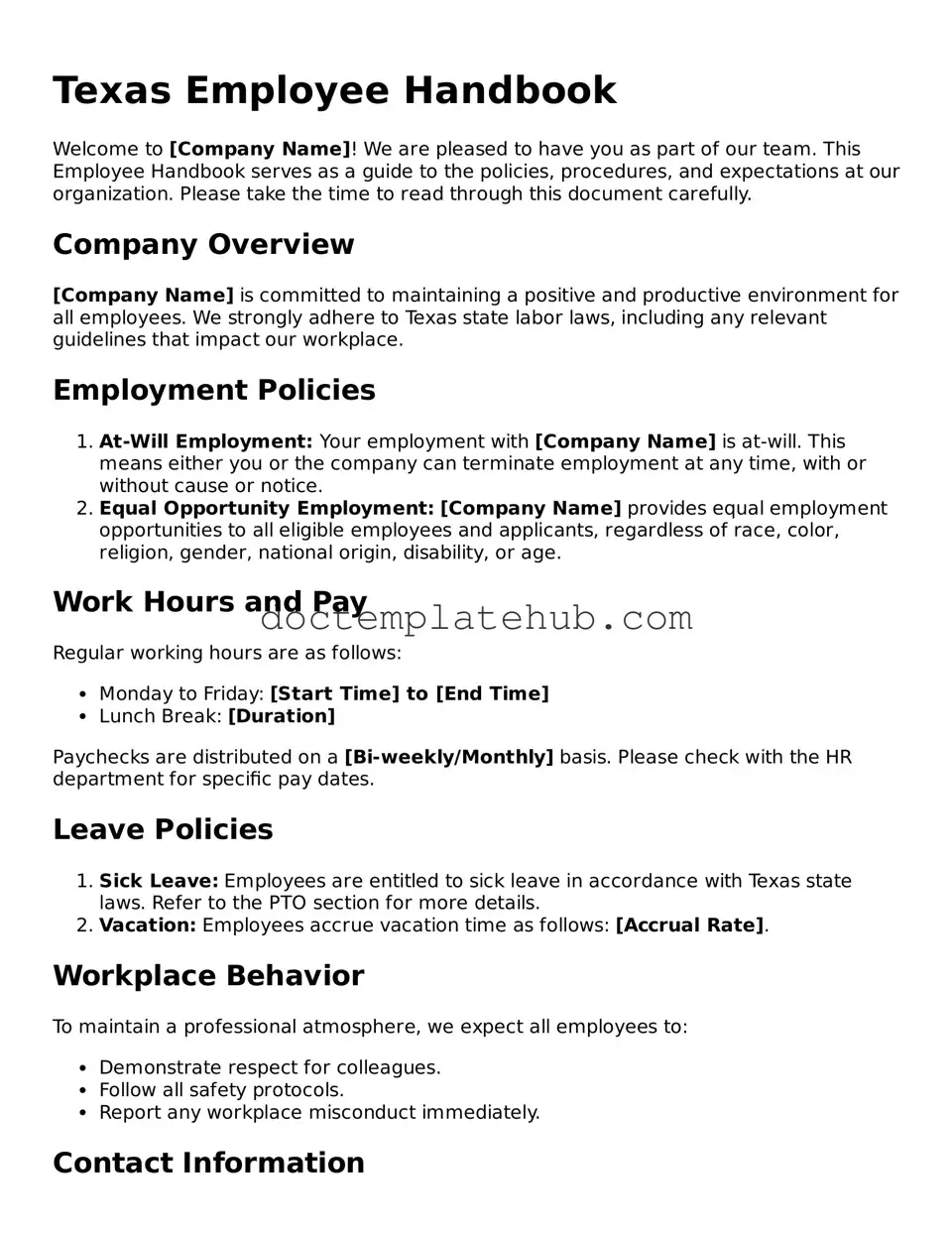What is the Texas Employee Handbook form?
The Texas Employee Handbook form is a document designed to outline the policies, procedures, and expectations that govern the workplace. It serves as a guide for employees, providing them with essential information about their rights, responsibilities, and the company's culture. This handbook typically includes sections on workplace conduct, benefits, leave policies, and disciplinary procedures, among other topics.
Why is it important to have an Employee Handbook?
An Employee Handbook is crucial for establishing clear communication between the employer and employees. It helps to set expectations and provides a framework for the work environment. By outlining policies and procedures, it can reduce misunderstandings and potential disputes. Furthermore, having a well-structured handbook can protect the company legally by demonstrating that it has communicated its policies effectively to its employees.
Who should receive a copy of the Employee Handbook?
Every employee, whether full-time, part-time, or temporary, should receive a copy of the Employee Handbook. It's important that all staff members have access to this document to understand their rights and obligations. Employers may choose to provide physical copies, digital versions, or both, ensuring that all employees can easily reference the handbook as needed.
How often should the Employee Handbook be updated?
Regular updates to the Employee Handbook are essential to reflect changes in laws, company policies, or organizational structure. Typically, a thorough review should occur at least once a year. However, if significant changes happen, such as new legislation or major shifts in company policy, it may be necessary to revise the handbook more frequently to ensure it remains current and compliant.
What should be included in the Employee Handbook?
A comprehensive Employee Handbook should include various key elements. These typically encompass an introduction to the company, an overview of workplace policies, employee rights, benefits information, procedures for reporting grievances, and disciplinary actions. Additionally, sections on workplace safety, anti-discrimination policies, and leave policies are also important to ensure employees understand their rights and responsibilities.
Can an Employee Handbook be used as a legal document?
While an Employee Handbook can serve as a reference for policies and procedures, it is not a legally binding contract on its own. However, it can have legal implications if the policies outlined are not followed consistently by the employer. It is advisable for employers to include a disclaimer stating that the handbook does not constitute a contract and that policies may be subject to change.
What should employees do if they have questions about the Employee Handbook?
If employees have questions or need clarification regarding the Employee Handbook, they should reach out to their supervisor or the human resources department. Open communication is encouraged, and employees should feel comfortable seeking guidance on any policies or procedures they do not fully understand. This proactive approach helps ensure that everyone is on the same page and contributes to a positive workplace environment.
